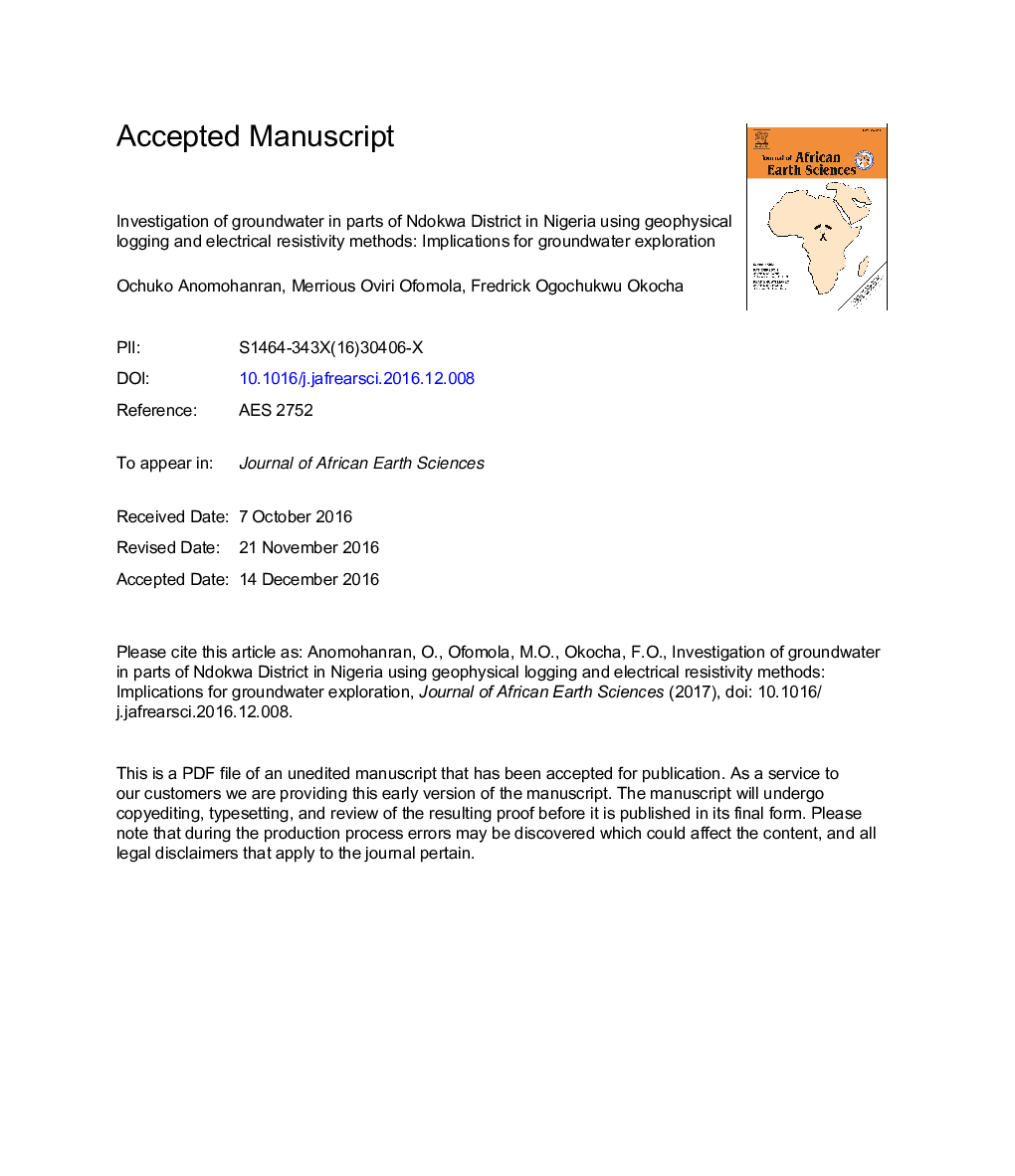| کد مقاله | کد نشریه | سال انتشار | مقاله انگلیسی | نسخه تمام متن |
|---|---|---|---|---|
| 5785681 | 1640179 | 2017 | 30 صفحه PDF | دانلود رایگان |
عنوان انگلیسی مقاله ISI
Investigation of groundwater in parts of Ndokwa District in Nigeria using geophysical logging and electrical resistivity methods: Implications for groundwater exploration
ترجمه فارسی عنوان
بررسی آبهای زیرزمینی در مناطق نودوکا در نیجریه با استفاده از روشهای ژئوشیمیایی و روشهای مقاومت الکتریکی: پیامدهای اکتشاف آبهای زیرزمینی
دانلود مقاله + سفارش ترجمه
دانلود مقاله ISI انگلیسی
رایگان برای ایرانیان
کلمات کلیدی
موضوعات مرتبط
مهندسی و علوم پایه
علوم زمین و سیارات
زمین شناسی
چکیده انگلیسی
Groundwater study involving the application of geophysical logging and vertical electrical sounding (VES) methods was carried out in parts of Ndokwa area of Delta State, Nigeria. The objective was to delineate the geological situation and the groundwater condition of the area. The geophysical logging of a drilled well and thirty VESs of the Schlumberger configuration were executed in this study using the Abem SAS 1000/4000 Terrameter. The result of the lithological study from the drilled well showed that the subsurface formation consist of lateritic topsoil, very fine sand, clayey fine sand, fine and medium grain sand, coarse sand, medium coarse sand and very coarse sand. The interpretation of the vertical electrical sounding data using a combination of curve matching and Win Resist computer iteration showed a close correlation with the well record. The result revealed the presence of four geoelectric layers with the aquifer identified to be in the fourth layer and having resistivity which ranged from 480 to 11,904 Ωm, while the depth ranged between 17.8 and 38.8 m. The analysis of the geophysical logging revealed that the average value of the electrical conductivity and the total dissolved solid of the groundwater in the aquifer were obtained as 229 μS/cm and 149 mg/cm3 respectively. These results indicate that the groundwater is within the permissible limit set by the Standard Organization of Nigeria for potable water which is 1000 μS/cm for electrical conductivity and 500 mg/cm3 for total dissolved solid. The fourth layer was therefore identified as the potential non conductive zone suitable for groundwater development in the study area.
ناشر
Database: Elsevier - ScienceDirect (ساینس دایرکت)
Journal: Journal of African Earth Sciences - Volume 129, May 2017, Pages 108-116
Journal: Journal of African Earth Sciences - Volume 129, May 2017, Pages 108-116
نویسندگان
Ochuko Anomohanran, Merrious Oviri Ofomola, Fredrick Ogochukwu Okocha,
